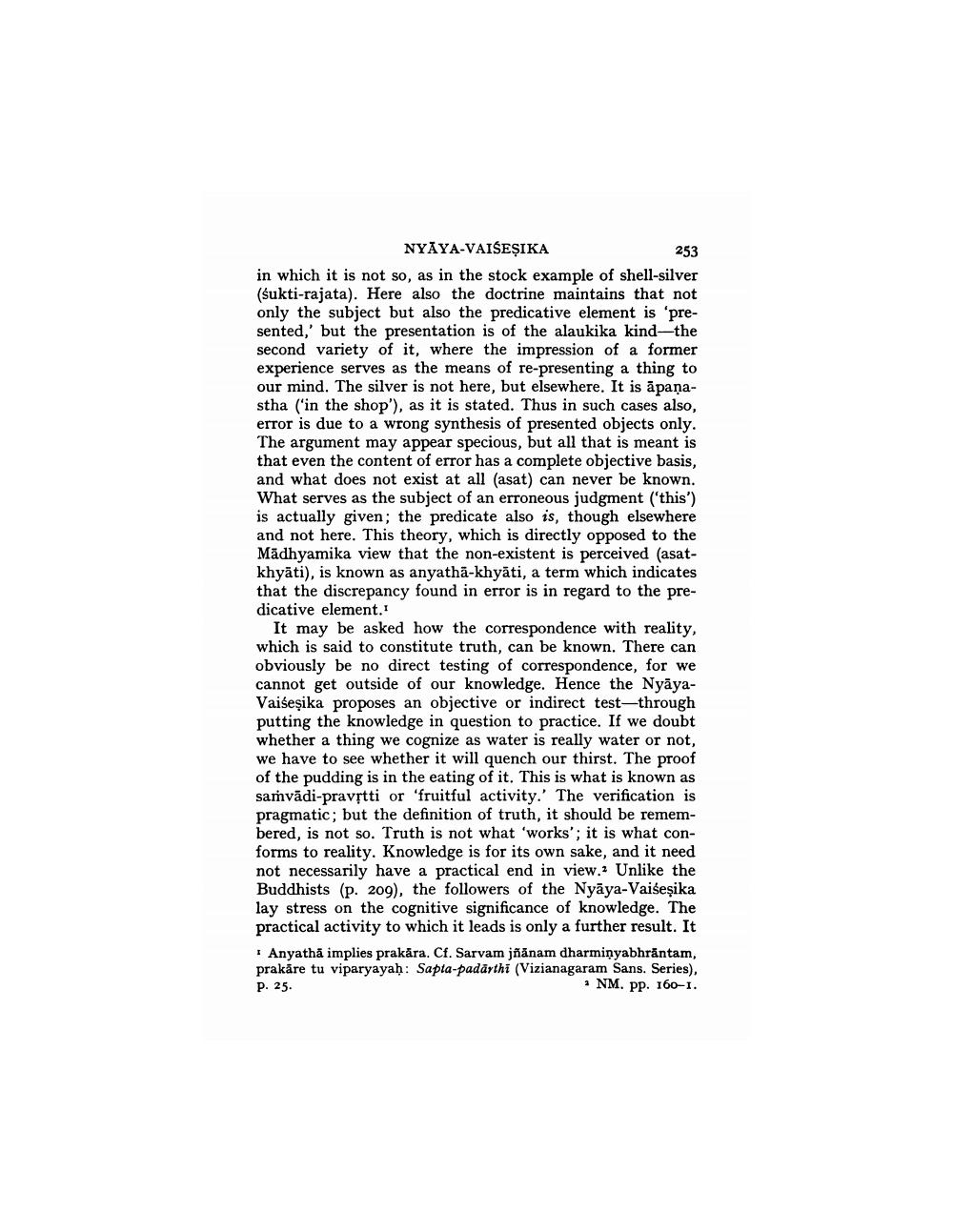________________
NYAYA-VAISEȘIKA
253 in which it is not so, as in the stock example of shell-silver (sukti-rajata). Here also the doctrine maintains that not only the subject but also the predicative element is presented, but the presentation is of the alaukika kind-the second variety of it, where the impression of a former experience serves as the means of re-presenting a thing to our mind. The silver is not here, but elsewhere. It is āpaņastha ('in the shop'), as it is stated. Thus in such cases also, error is due to a wrong synthesis of presented objects only. The argument may appear specious, but all that is meant is that even the content of error has a complete objective basis, and what does not exist at all (asat) can never be known. What serves as the subject of an erroneous judgment ('this') is actually given; the predicate also is, though elsewhere and not here. This theory, which is directly opposed to the Madhyamika view that the non-existent is perceived (asatkhyāti), is known as anyatha-khyāti, a term which indicates that the discrepancy found in error is in regard to the predicative element.
It may be asked how the correspondence with reality, which is said to constitute truth, can be known. There can obviously be no direct testing of correspondence, for we cannot get outside of our knowledge. Hence the NyāyaVaišesika proposes an objective or indirect test-through putting the knowledge in question to practice. If we doubt whether a thing we cognize as water is really water or not, we have to see whether it will quench our thirst. The proof of the pudding is in the eating of it. This is what is known as samvādi-pravrtti or 'fruitful activity.' The verification is pragmatic; but the definition of truth, it should be remembered, is not so. Truth is not what 'works'; it is what conforms to reality. Knowledge is for its own sake, and it need not necessarily have a practical end in view. Unlike the Buddhists (p. 209), the followers of the Nyāya-Vaišeşika lay stress on the cognitive significance of knowledge. The practical activity to which it leads is only a further result. It
Anyathā implies prakära. Cf. Sarvam jñānam dharminyabhrāntam, prakāre tu viparyayah: Sapta-padārthi (Vizianagaram Sans. Series), P. 25.
· NM. Pp. 160-1.




